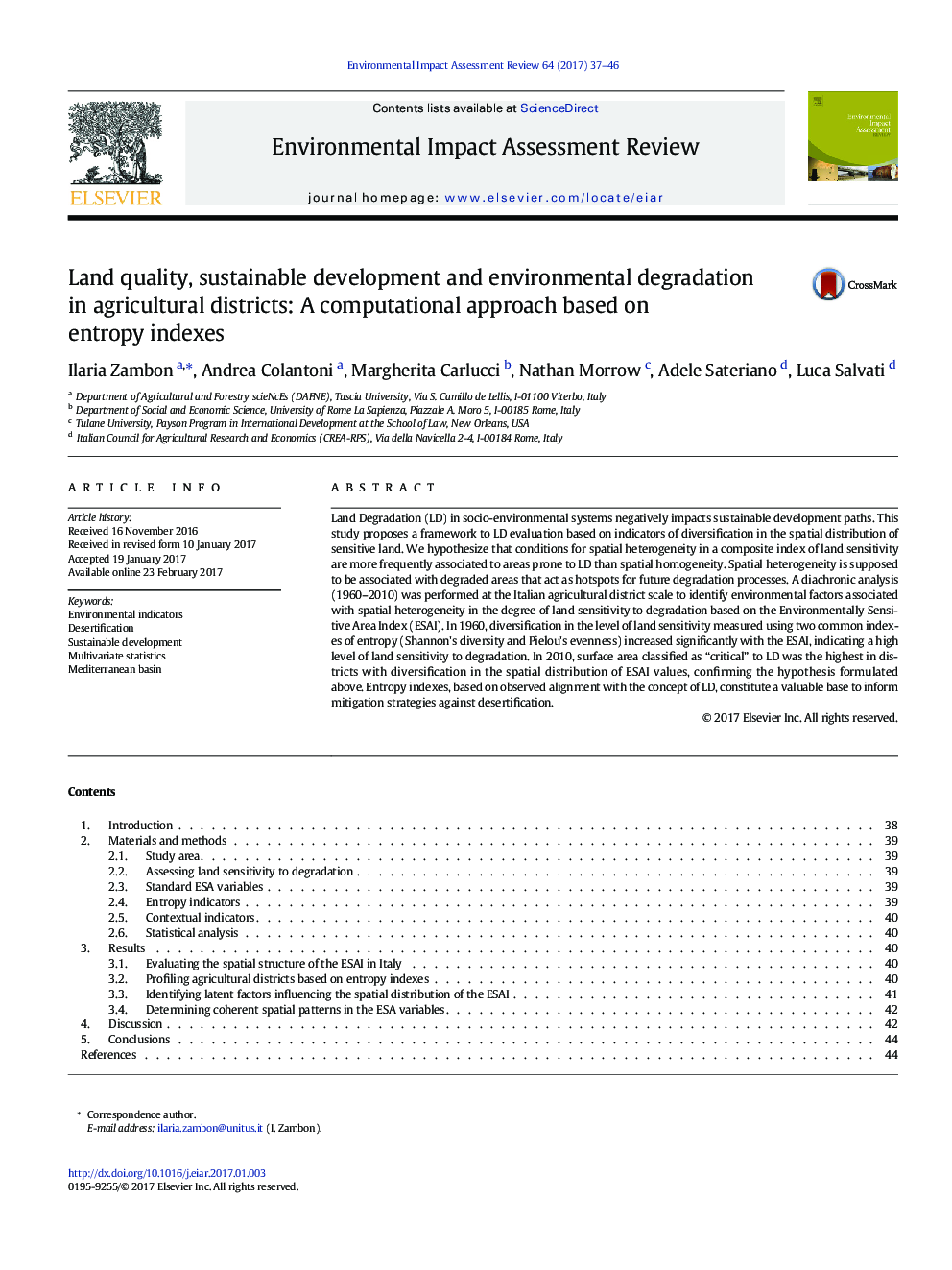| Article ID | Journal | Published Year | Pages | File Type |
|---|---|---|---|---|
| 5115646 | Environmental Impact Assessment Review | 2017 | 10 Pages |
â¢Spatial heterogeneity is supposed to be associated with degraded areas.â¢Entropy indexes can inform mitigation strategies against desertification.â¢Assessing spatial diversification in the degree of land sensitivity to degradation.â¢Mediterranean rural areas have an evident diversity in agricultural systems.â¢A diachronic analysis carried out at the Italian agricultural district scale.
Land Degradation (LD) in socio-environmental systems negatively impacts sustainable development paths. This study proposes a framework to LD evaluation based on indicators of diversification in the spatial distribution of sensitive land. We hypothesize that conditions for spatial heterogeneity in a composite index of land sensitivity are more frequently associated to areas prone to LD than spatial homogeneity. Spatial heterogeneity is supposed to be associated with degraded areas that act as hotspots for future degradation processes. A diachronic analysis (1960-2010) was performed at the Italian agricultural district scale to identify environmental factors associated with spatial heterogeneity in the degree of land sensitivity to degradation based on the Environmentally Sensitive Area Index (ESAI). In 1960, diversification in the level of land sensitivity measured using two common indexes of entropy (Shannon's diversity and Pielou's evenness) increased significantly with the ESAI, indicating a high level of land sensitivity to degradation. In 2010, surface area classified as “critical” to LD was the highest in districts with diversification in the spatial distribution of ESAI values, confirming the hypothesis formulated above. Entropy indexes, based on observed alignment with the concept of LD, constitute a valuable base to inform mitigation strategies against desertification.
